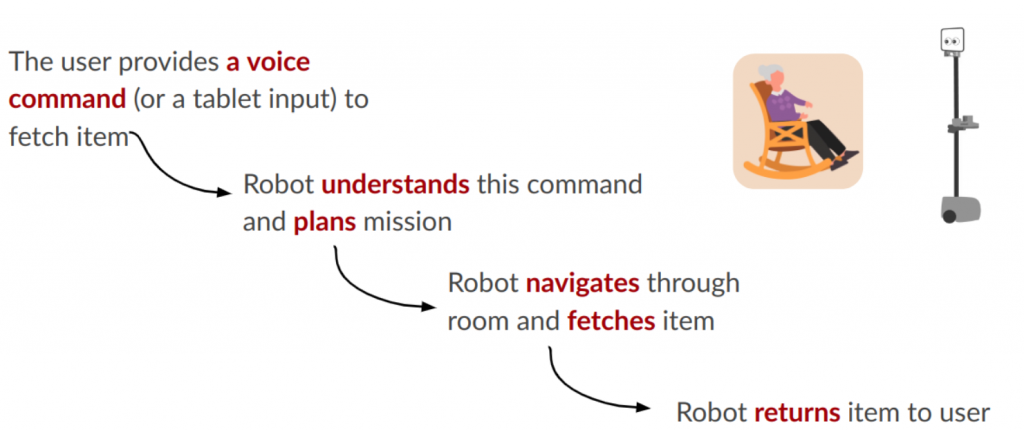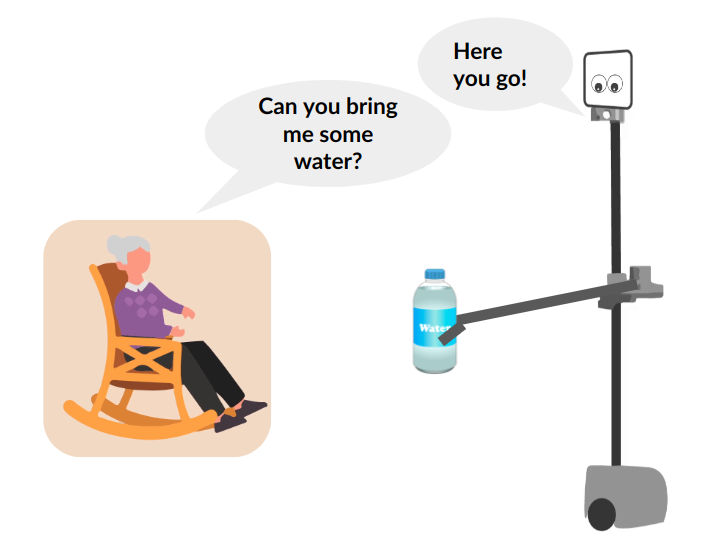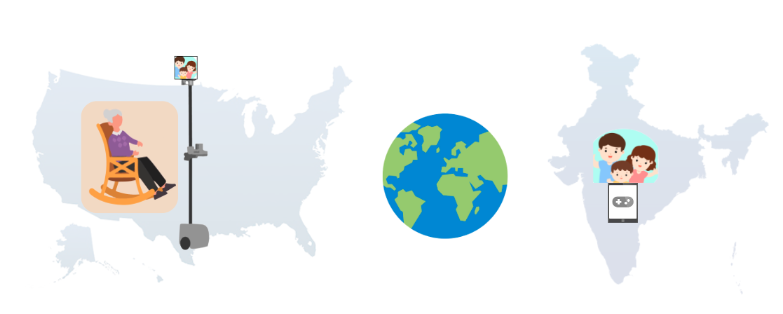Problem Description
The Assisted Living industry is facing a major labor shortage. Since 2019, 238,000 caregivers have left the industry. The annual turnover rate is at an all-time high of 40-67%. This drop in the number of caregivers is facing a stark rise in the number of seniors seeking assistive healthcare. At present, there are more than 2.7 million seniors living in Assisted Living Facilities. It is predicted that in the future,7 out of 10 people will require assisted living care in their lifetime. It is also projected that by 2040, seniors will comprise 22% of the US population, compared to the modern-day figure of 17%. This showcases how significant the gap between the demand and supply is. As for the problems people usually suffer from, according to Center for Disease Control and Prevention, the portion of people facing difficulty with mobility is 40% out of all the disabilities.
To combat this issue, we introduce Alfred. Alfred is a friendly indoor robot for low-risk elderly assistance to make up for the drop in labor in the industry. Alfred aims to collaborate with nurses to take care of patients by autonomously performing object pick-and-place tasks. It comes with some social interaction capability where a distant loved one can feel telepresent in the patient’s vicinity in the form of a robot. It can also hold knowledgeable conversations with the patient.
Use Case

Jenna is sitting down, going about her day when she suddenly starts feeling thirsty. She realizes that earlier in the morning when she woke up, the nurse kept her water bottle on the table far away near the wall. Now, she dreads the fact that in her age, with the limited mobility she has, she either has to force herself to get through the pain and get the water bottle, or ask a nurse for a help. She always feels like she has to depend on a human and instead of asking for help and feeling guilty, she just hides her pain. She remembers that she has Alfred as her companion. She just says, “Hey Alfred!” and the robot responds and starts listening to Jenna. Jenna says “Can you get me that water of bottle please?” Alfred knows that it’s that same old CMU shop water bottle that Jenna has kept dearly with her since her college days. Alfred goes to the table, gets the water bottle, and delivers it to Jenna. Jenna can now finally drink water after feeling thirsty for so long.

Jenna’s family wants to not just have a conversation with Jenna but also be able to help her by being telepresent in the room with her in the shape of Alfred. They call Alfred, Jenna picks it up, giving permission to the family to control the robot. The family goes around the room, draws her blanket while she’s in bed, remind her of her medicines and deliver them to her. They don’t feel as distant anymore.
